Positive Health Online
Your Country

Neural Organisation Technique
listed in neurological and neurodegenerative, originally published in issue 50 - March 2000
The body is organised functionally into four primal survival systems which are generally known as the feeding, fight/flight, reproduction and immune systems. All physiological, neurological, vegetative and cognitive activities must function within or through these survival systems in an organised and integrated manner. In order for the body to survive, these systems must be organised within themselves first and then must be integrated and synchronised with each other. This organisation is manifest through the integrated function of the central nervous system. Various kinds of stress including physical, emotional, chemical, or environmental trauma can, and many times do, interfere with the harmonious and organised function of these reflex systems and ultimately the central nervous system itself.
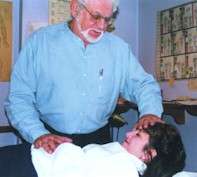
Neural Organisation Technique (NOT), a non-invasive, kinesiologically-based treatment protocol, is designed to recognise any of the disorganisations that may be found within the neural programmes of these primal survival systems if damaged or otherwise compromised. The treatment protocols are then designed to specifically organise or reorganise a disorganised central nervous system. A disruption of the natural balance within these previously synchronised processes will cause a change in the electromagnetic field in various parts of the body. This EM change can then be measured, analysed and treated. Homeostasis is then restored to the body by activating combinations of the known reflex systems, acupuncture meridians, muscle spindles, magnetic energy, cranial and spinal bone balances and nutrition which control these systems. The key to the success of this treatment protocol is that it recognises the need for the specific organisation and integration of all systems within the body.
The body is a totally integrated biological and energetic entity where everything affects everything else in one way or another and as the old song goes, the “head bone” is really connected to the “foot bone”. It is impossible to treat one part of the body without affecting or causing stress or change somewhere else in the body.
The list of conditions treated with this method almost reads like a pathology book because it is so diverse. This is because the treatment protocols are aimed at the neurological, physiological and energetic deficits which either cause or allow the condition or deficit to exist, and not necessarily at the condition itself. It doesn’t matter what you have or what you call it but rather why you have it. We don’t treat the disease but we do treat the causes.
Neural Organisation Technique is unique in other ways not found in other treatment protocols. The NOT examination and treatment protocols take into account the body’s awareness of itself and the circumstances of life as it is lived. Eyes open and closed, light and dark and half-light conditions (dawn, dusk, etc) and various eye directions are a normal part of the usual examination and treatment procedures. Also considered are changing body positions (getting up from sitting or lying), cold, heat, walking, jumping, running, sitting in the car, etc. which very often influence the memory of the circumstances surrounding the condition. These circumstances, when included in the treatment protocol, are almost always key to successful treatment and usually make for rapid and successful conclusions to any condition.
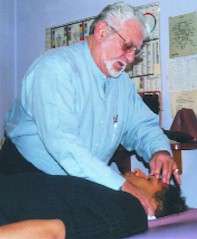
Correcting head and neck righting reflexes (rubbing)
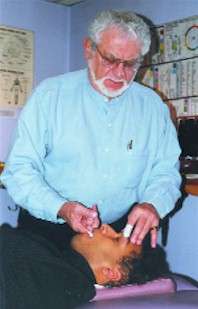
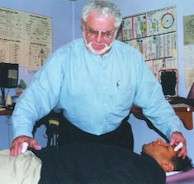
Problems treated by NOT
Conditions seen by practitioners of the Neural Organisation Technique protocols include the usual spinal and pelvic problems such as sacro iliac and/or sacro lumbar (low back pains), cervical (neck) and thoracic (trunk) spinal problems, vertebral disc, sciatica (pain in the nerve in the leg), idiopathic scoliosis and other similar structural conditions. These conditions are treated by other systems as well. Neural Organisation Technique is better known for some of its specialty treatment protocols such as the closed head injury syndromes.Sports injuries among the young are becoming almost epidemic. A series of studies has concluded that head-to-head collisions in sports can produce brain injuries that may affect high school and college athletes years after they’ve left the court or playing field. According to the Journal of the American Medical Association, about 62,000 US students and athletes suffer ‘mild’ head injuries annually. Some of these injuries affect learning, memory, concentration and decision making. Athletes with learning disorders appear to suffer more significant long-term consequences from head injuries sustained in sports. This in itself is a very serious situation because there is very little adequate treatment available to counter the effects of these head traumas. For the most part, no treatment is even offered because it is generally felt that the condition will resolve itself in time. This is almost never the case, but the case histories seldom span more than three months when any lesion caused by the trauma heals. To compound the problem even further, since the advent of seat belts and air bags there are fewer fatal automobile accidents, but many more head-injured people who now survive the otherwise fatal accident. The injured athlete and the accident survivor both suffer post-trauma injury syndromes which include chronic head, neck, spine and back pains, scoliosis and neurological dysfunction of one kind or another in various parts of the body or in the use of that part. Cognitive deficits are also common.
The original NOT protocols were first designed to deal with the neurological, physiological and cognitive deficits associated with cranial injury complexes. The term ‘complex’ is used because all of these injuries manifest in multiple deficits. These injury complexes include whiplash, concussion, birth trauma and related problems and headaches (specified and unspecified including migraines) and multiple Temporo Mandibular Joint (TMJ – part of the defence system in the body) deficits. The TMJ is neurologically involved in the digestion process and ramifications of these traumatic deficits can manifest in digestive disorders, constipation, hiatal hernia, ilio caecal and other digestive valve problems and swallowing difficulties. All sorts of allergies including environmental and food allergies, bronchitis and asthma and auto-immune conditions can result from the digestive disturbances because of mal digestion or mal absorption. Of course leg, knee, arm and shoulder problems have their own specific protocols designed to address any structural or functional deficits.
This scenario demonstrates not only the interrelation of one system to the other but also why these traumas are not just a stiff neck which will go away in time.
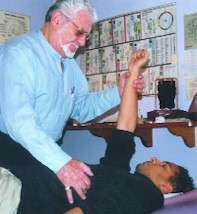
(an acupuncture point specific to the immune system)
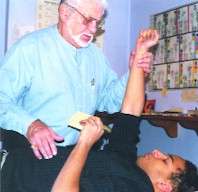
Early in its development, the organisational effect of Neural Organisation Technique on the nervous system was recognised to successfully influence the treatment for both dyslexia/ learning disabilities and scoliosis. A specific deficit in the vestibular ocular reflex system was found to be involved in both conditions. Many chiropractors and then kinesiologists became interested in learning how to address these and other conditions which have resisted the best efforts of orthodox treatment.
Dyslexia and all learning disabilities has been recognised by the various national and local organisations involved to be a condition of neural disorganisation. NOT was uniquely able to address these disorganisations and a successful treatment protocol was then created.
ADD (Attention Deficit Disorder) and ADHD (Attention Deficit Hyperactive Disorder) are more complicated forms requiring more extensive treatment protocols. No drugs are ever used in relation to these conditions.
As new information is discovered as to how the body really works, Neural Organisation Technique protocols are in constant development. The primal survival systems are also constantly re-examined to try to find more of the subtleties within their functions and in their relation to each other.
The Interconnectedness of the Body
Nothing happens in or to the body without a total body awareness of the incident. This awareness is communicated through an intact nervous system so that the body can accommodate the particular incident and can act appropriately to survive. As these systems are involved in our basic survival, they must also of necessity be reflex in nature, that is, automatic, needing no cognitive activity or training to function. Trauma in all of its possibilities can and does disrupt the neural programmes within these reflex systems which then send inappropriate signals to the body.
There is an axiom in neurology which is known as the ‘all or none’ rule.
If there is sufficient stimulation then that neurological program must fully activate and if not, it will not. Our research has identified the specific areas in or on the body which will activate the neural circuits within these programmes. They in turn control all possibilities including posture, gait, balance, movement, glandular, immune, digestive and cognitive functions.
Since we are dealing with neural integration and integrity, the support structures of the body, the skeleton and particularly the cranial bones and their function, must also be taken into consideration. The anatomical position of the bones of the skeleton is obviously important. The physiological function and reciprocal respiratory motion of the cranial system is essential to proper neurological function and to life itself. The function of the brain can be monitored through instrumentation by measuring the electromagnetic discharges of the brain itself.
The lines of force of the electromagnetic fields which influence all body function, including the brain, are laid down in the connective tissues, particularly in the bones, and in the case of the brain in the cranial bones.
Any disturbance of this delicate balance can produce disastrous results in relation to brain and neurological function. We see evidence of this every day when we see the results of cranial trauma.
The method of examination for all of the above is based on kinesiological concepts in which a strong muscle indicator [a muscle which can resist reasonable force on command] is used. This method accesses the body’s own knowledge of itself. If there is a functional or structural deficit anywhere in the body, there will be a change in the electromagnetic energy in that part or function. When that part or reflex area is touched by either the examiner or the patient there is a distraction to the overall energy field as the body tries to compensate for the change. This change is registered in the test muscle and the muscle momentarily weakens on stress.
A frequent question asked by both patients and doctors is “how long does it last?” If the corrections are made properly and completely they usually last until the patient re-injures themselves, which may be many years later.
One thing the patients appreciate is that “if it ain’t broken, don’t fix it, leave it alone” philosophy of NOT. This brings in many new patients.
These are some of the principles of NOT. This is how the body works, not just sometimes but all the time. The philosophy of NOT is that it is NOT impossible.
Due to the success of the various treatment protocols patients come from all over the world and almost every State in the US. They contact our office almost daily seeking a practitioner of NOT close to home or they will journey to our Brooklyn office. They come with chronic conditions of almost every description as patient tells patient and/or parent tells parent.
Further Information
For more information on Neural Organisation Technique and seminar information call or write to Dr Carl A Ferreri, 3850 Flatlands Ave., Brooklyn, NY 11234. Tel:+1 (718) 253 9702 or fax : +1 (718) 951 7825; www.neuralorganizationtherapy.com/N.O.T.htmlComments:
-
Sydney said..
Hello
I would like to see a practitioner of NOT for myself and my husband. We live in Manhattan. Is there someone you would recommend. Or do you treat?
Thank you
Sydney
-
Admin said..
This article was written and published 12 years ago. Regretfully we no longer have any contact details for Dr Carl Ferreri.
-
MONICA said..
there are some practitioner in argentina or spain for teach the NOT ?
thank you for your answer
-
SCHMITT said..
Hello, there's now a group of certified (by C.Ferreri) NOT instructors which is called NOT-International Professional. All details here : http://www.neuralorganizationtechnique.org/index.html
See you,
Yann.
-
Dr. Annalee Kitay said..
Hello,
I was excited to find your site with the article written by Dr. Ferreri, that I edited for him at the time.
I practice in Boca Raton, Florida and in Whippany, New Jersey.
The technique is alive and still doing great things for many.
my website is www.drkitay.com if people want to contact me.
-
Evangelos Foufoulas said..
I would like to be trained in NOT I am from Greece and i am interested to follow seminars in Europe
Thank you
Evangelos Fufulas
Orthopaedic Surgeon